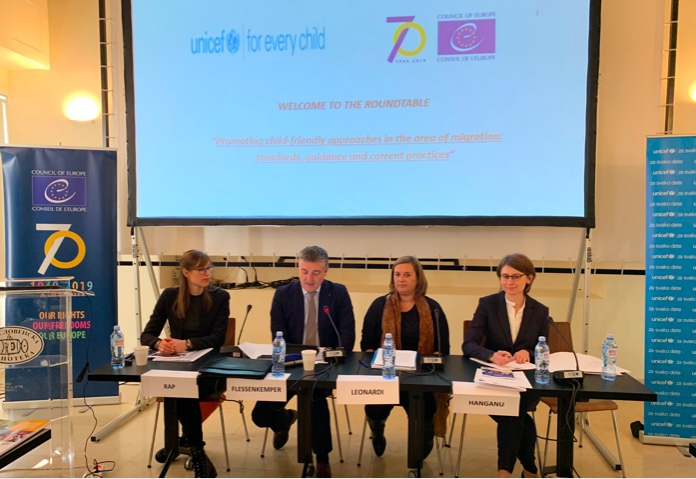
Photo credits: Special Representative of the Secretary General on Migration and Refugees, Council of Europe
By Stephanie Rap
s.e.rap@law.leidenuniv.nl
On 9 December 2019 the Council of Europe (CoE) launched the report Promoting child-friendly approaches in the area of migration. A review of standards, guidance and current practices as part of the activities taking place during International Human Rights Week. In the report guidance is given to CoE member states on how to make their asylum procedures and practices more in line with the rights, interests and needs of refugee and migrant children.
Since 2013, hundreds of thousands of children have arrived in Europe, many travelling unaccompanied and separated from their families. Although, the total number of children arriving decreased by almost 70% between 2016 and 2018, the number of unaccompanied and separated children has increased during this period. Some countries received more children than others – and the Southern European states are known for having received the majority of refugee and migrant children.
The United Nations Convention on the Rights of the Child (CRC) is celebrating its 30th anniversary this year and as of today it is almost universally ratified. The CRC recognises rights to which all children are entitled and it is the first international instrument to acknowledge the unique needs of refugee and asylum-seeking children, including children without parental care (Article 21) and children requiring refugee protection (Article 22). The UN Committee on the Rights of the Child, the monitoring body of the CRC, has noted that the CRC rights are not limited to children who are citizen of a state, but must be available to all children – including asylum-seeking, refugee and migrant children – irrespective of their nationality, immigration status or statelessness (General Comment No. 6, para. 7). In line with the CRC general principles, states have a legal obligation to ensure that migrant and refugee children’s basic needs are met (Article 6), that the child’s best interests are a primary consideration (Article 3(1)), that they have a right to be heard (Article 12) and enjoy their rights without discrimination (Article 2). States must adopt a child-specific approach to migration practices, policies and decision-making (General Comment No. 22). At the regional level, in Europe, quite some initiatives have been undertaken to safeguard the rights of refugee and migrant children, among others by the Council of Europe.
In 2010, the Council of Europe Committee of Ministers adopted the Guidelines on child-friendly justice, recognising that “specific protection and assistance may need to be granted to more vulnerable children, such as migrant children, refugee and asylum-seeking children.” In 2016, the Secretary General of the Council of Europe appointed a Special Representative on Migration and Refugees with a special mandate on the protection of refugee and migrant children. In 2017, based on the findings of the Special Representative the Committee of Ministers of the Council of Europe adopted an Action Plan on protecting refugee and migrant children in Europe (2017-2019), with the purpose of improving children’s access to their rights, access to information and to child-friendly procedures.
The report, that was compiled as part of the Action plan, brings together international and European standards on child-friendly practices in the context of migration and illustrations from practice of initiatives, programmes and procedures on the ground that serve to implement these standards. The examples of every day practices that meet the needs of children aim to support legal professionals, policy makers and frontline professionals who seek to implement or advocate for a child rights-based approach to migration.
One of the findings of the report is that a gap can be identified between the standards set by the various instruments and the reality of refugee and migrant children’s lived experiences. Refugee and migrant children struggle to have their needs met, their rights fulfilled and their voices heard. While there are many projects, initiatives, programmes and interventions offered by states and non-governmental organisations across Europe that support the vindication of the rights of refugee and migrant children, these are not always available to every child; nor are these consistently applied from one country to the next. Many practices generally appear to be ad hoc, small scale or one-off and sometimes very localised, among other things due to limited resources and funding. In order to address this gap, the report illustrates a number of good and promising practices that implement the children’s rights standards. One important barrier that exists to wider application of child-friendly approaches is a lack of awareness of how to make practices more child-friendly. The report provides a first step in sharing knowledge and experience between countries and hopefully this will lead to increased awareness and improvements for refugee and migrant children arriving in Europe. The most important task for professionals is to really listen to what children themselves have to say to develop practices that are more in line with their needs, interests and wishes.
Bio
Stephanie Rap is Assistant Professor in children’s rights at the Department of Child Law, Leiden University, the Netherlands.
